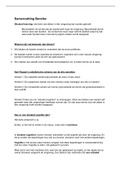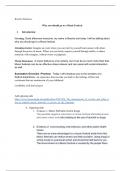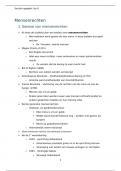Project 4
Part 1
Kalyuga, S., Chandler, P., & Sweller, J. (1998). Levels of expertise and instructional design. Human
Factors: The Journal of the Human Factors and Ergonomics Society, 40(1), 1-17.
Investigates relations between instructional design and levels of expertise.
Cognitive load theory, used to design a variety of instructional procedures based on the
assumptions that working memory is limited and that skilled performance is driven by automated
schemas held in long-term memory. Theory: information presented to learners and the activities
required of them should be structured to eliminate any avoidable load on working memory and to
maximize the acquisition of automated schemas. Two techniques:
1. The split-attention effect. When multiple sources of information are difficult or impossible to
understand in isolation. They must be integrated for the material to be rendered intelligible, with
mental integration imposing a heavy cognitive load. Split-source instructions: the diagram and text
are presented as two separate sources of information. Integrated instructions: the textual
information is physically integrated with its matching entities on the diagram; a single source of
information. A superiority of the physically integrated format; the split-attention effect.
2. The redundancy effect. When multiple sources of information are intelligible in isolation and each
source provides similar information but in a different form, they are redundant. An unnecessary
working memory load is caused not by learners having to split their attention between multiple
sources of information, but by the existence of multiple sources of information. Redundancy effect:
eliminating redundant material results in better performance than when the redundant material is
included.
Depends on the nature of the information and on the level of expertise of the learner.
3 experiments, hypothesis: with increasing experience, the effectiveness of an integrated-
diagram-and-text condition would decrease, whereas that of a diagram-only condition would
increase. Experiment 1: inexperienced trainees with little electrical knowledge. The split-attention
effect. The text should be physically integrated with the diagram rather than eliminated. Experiments
2 and 3: investigate how ideal instructional designs change as expertise increases, to the point at
which the trainees indicated a clear preference for a diagram-only format; a redundancy effect.
Experiment 1
Compare the effects of 3 instructional formats (integrated diagram and text, separate diagram and
text (split-source), and diagram only) on participants who had recently begun their apprenticeships
and had no formal electrical training.
Method
Participants. 26 first-year trade apprentices and trainees; no specialized training in electrical circuits
or wiring.
Procedure. 2 instruction phases and 2 test phases (one of each for the bell and light materials and for
the water pump materials).
Results and Discussion
Variables:
● instruction time. The diagram-only group took significantly less time studying (a) the bell and light
instructions than did the separate-diagram-and-text group and (b) the water pump instructions than
both the integrated- and separate diagram-and-text groups.
● subjective ratings of mental effort / cognitive load. The integrated-diagram-and-text format was
required significantly less mental effort than the diagram-only format for both sets of instructional
materials and significantly less mental effort than the separate-diagram-and-text format for the bell
Part 1
Kalyuga, S., Chandler, P., & Sweller, J. (1998). Levels of expertise and instructional design. Human
Factors: The Journal of the Human Factors and Ergonomics Society, 40(1), 1-17.
Investigates relations between instructional design and levels of expertise.
Cognitive load theory, used to design a variety of instructional procedures based on the
assumptions that working memory is limited and that skilled performance is driven by automated
schemas held in long-term memory. Theory: information presented to learners and the activities
required of them should be structured to eliminate any avoidable load on working memory and to
maximize the acquisition of automated schemas. Two techniques:
1. The split-attention effect. When multiple sources of information are difficult or impossible to
understand in isolation. They must be integrated for the material to be rendered intelligible, with
mental integration imposing a heavy cognitive load. Split-source instructions: the diagram and text
are presented as two separate sources of information. Integrated instructions: the textual
information is physically integrated with its matching entities on the diagram; a single source of
information. A superiority of the physically integrated format; the split-attention effect.
2. The redundancy effect. When multiple sources of information are intelligible in isolation and each
source provides similar information but in a different form, they are redundant. An unnecessary
working memory load is caused not by learners having to split their attention between multiple
sources of information, but by the existence of multiple sources of information. Redundancy effect:
eliminating redundant material results in better performance than when the redundant material is
included.
Depends on the nature of the information and on the level of expertise of the learner.
3 experiments, hypothesis: with increasing experience, the effectiveness of an integrated-
diagram-and-text condition would decrease, whereas that of a diagram-only condition would
increase. Experiment 1: inexperienced trainees with little electrical knowledge. The split-attention
effect. The text should be physically integrated with the diagram rather than eliminated. Experiments
2 and 3: investigate how ideal instructional designs change as expertise increases, to the point at
which the trainees indicated a clear preference for a diagram-only format; a redundancy effect.
Experiment 1
Compare the effects of 3 instructional formats (integrated diagram and text, separate diagram and
text (split-source), and diagram only) on participants who had recently begun their apprenticeships
and had no formal electrical training.
Method
Participants. 26 first-year trade apprentices and trainees; no specialized training in electrical circuits
or wiring.
Procedure. 2 instruction phases and 2 test phases (one of each for the bell and light materials and for
the water pump materials).
Results and Discussion
Variables:
● instruction time. The diagram-only group took significantly less time studying (a) the bell and light
instructions than did the separate-diagram-and-text group and (b) the water pump instructions than
both the integrated- and separate diagram-and-text groups.
● subjective ratings of mental effort / cognitive load. The integrated-diagram-and-text format was
required significantly less mental effort than the diagram-only format for both sets of instructional
materials and significantly less mental effort than the separate-diagram-and-text format for the bell






